El Garmin Instinct 2 supone la mayor renovación de un modelo que el fabricante ha hecho en toda su historia. El Instinct original se lanzó como un modelo de prueba pero tal fue su éxito que se ha convertido en todo un referente dentro de la gama de Garmin.
Para esta segunda versión Garmin ha lanzado la friolera de 20 relojes diferentes. Hay opciones en versiones, tamaños, colores, prestaciones… El Instinct ya no es un reloj que busca estar en la muñeca de senderistas, ahora apunta mucho más lejos.
Se puede decir que se trata de una versión económica de los Fenix, con una estética totalmente diferenciada pero con casi el mismo número de prestaciones. La pantalla sigue siendo de tamaño discreto y en blanco y negro (para dejar espacio a la carga solar y aumentar la autonomía); pero ahora hay cosas como Garmin Pay, soporte para Connect IQ completo, métricas completas de entrenamiento, administrador de energía, etc.
Llevo cerca de un mes utilizando el Garmin Instinct 2 Solar como único reloj y también en combinación con otras pruebas, tiempo suficiente para saber exactamente de qué es capaz de hacer este nuevo modelo.
La unidad que ves en la prueba la he comprado directamente en tienda, no se trata de una unidad de prensa. En cualquier caso, ya sabes que nunca hay compensación de ningún tipo por parte del fabricante.
Recuerda, si te gusta el trabajo que realizo en las pruebas y quieres colaborar con la página web, puedes hacerlo realizando tus compras a través de los enlaces publicados. ¡Gracias por tu soporte!
¿El vídeo y el audio es más lo tuyo en lugar de tanto texto? Sin problema, también tienes la review en vídeo del Garmin Instinct 2 Solar publicada en YouTube.
Navegar a secciones específicas
- Garmin Instinct 2 Solar
- Garmin Instinct 2: especificaciones y novedades
- Versiones disponibles del Garmin Instinct 2
- Así es el Garmin Instinct 2
- Autonomía y carga solar
- Funciones avanzadas de entrenamiento
- Navegación de rutas
- Rendimiento GPS Garmin Instinct 2
- Fiabilidad del altímetro barométrico del Instinct 2
- Rendimiento sensor de pulso óptico
- Comprar Garmin Instinct 2
- Opinión Garmin Instinct 2
Garmin Instinct 2 Solar
Funcionamiento global - 9
Posibilidades de entrenamiento - 9
Plataforma y aplicaciones - 8
Autonomía - 9.5
Acabados y comodidad - 8
Relación precio/prestaciones - 8
8.6
TOTAL
Una renovación de modelo que es más que una simple actualización. El Instinct 2 ha dejado de ser un reloj Outdoor centrado principalmente en los senderistas y ahora está cargado de prestaciones de entrenamiento que antes no estaban disponibles en esta gama. Todo ello acompañando la estética especial del Garmin Instinct 2, que ahora está disponible en dos tamaños diferentes, con o sin carga solar, muchos colores donde elegir y versiones específicas para surf, uso militar, camioneros, etc.
Lo mejor
- Todas las prestaciones de los Forerunner
- Instinct 2S para el que quiera un modelo más pequeño
- Autonomía
- Perfiles multideporte/triatlón
Necesita mejorar
- La pantalla, aunque con más resolución, continúa siendo bastante limitada
- Garmin Pay exclusivo de los modelos Solar
- Pantalla pequeña
Garmin Instinct 2: especificaciones y novedades
La lista de novedades presentada por el Instinct 2 es inmensa por un motivo muy sencillo: se añaden todas las prestaciones que antes estaban reservadas a los Forerunner y Fenix, y ahora hacen acto de presencia en un reloj de la gama Instinct.
Es decir, no hay nada totalmente nuevo en Garmin, pero sí muchísimas cosas que no teníamos antes disponibles en esta gama de relojes.
Así que antes de entrar en todos los detalles, vamos con el listado completo de cuáles son esas novedades específicas que debes conocer.
- Dos tamaños diferentes: Garmin Instinct 2 de 45mm y Garmin Instinct 2S de 40mm
- Varias versiones: estándar, Solar, Camo, Tactical Solar, Surf y Surf Solar. Además una edición especial Dezl para camioneros
- Mayor resolución de pantalla: 176×176 píxeles en lugar de 128×128 del modelo original
- Resolución de pantalla de 156×156 píxeles en el Instinct 2S
- Nuevo sensor de pulso óptico Garmin Elevate v4
- Estimación de saturación de oxígeno en sangre (SpO2) gracias al nuevo sensor
- Estética diferente, con el bisel algo más redondeado
- Cumple el estándar militar MIL-STD-810G
- Nuevos perfiles de deporte como HIIT, yoga, escalada, carrera virtual…
- Incluye perfiles multideporte para duatlón, triatlón, entrenamientos combinados…
- Soporte para más tipos de sensores: Potenciómetro y rodillos inteligentes
- Descarga de datos de sensores con memoria en natación como HRM-Tri, HRM-Pro y HRM-Swim
- Compatible con métricas de carrera avanzada de esos mismos sensores
- Soporte para sensores Bluetooth
- Posibilidad de transmitir datos de sensor óptico a otros dispositivos
- Power Manager para configurar las diferentes opciones de consumo de energía (no estaba en el Instinct original)
- Con carga de entrenamiento/estado de entrenamiento (no estaba en el Instinct original)
- Aclimatación al calor y altitud
- Sugerencias de entrenamiento diario (no estaba en el Instinct original)
- Estimación de VO2Max (no estaba en el Instinct original)
- Dinámica de ciclismo de montaña (no estaba en el Instinct original)
- Métrica Body Battery (no estaba en el Instinct original)
- Seguimiento de tasa de respiración (no estaba en el Instinct original)
- Seguimiento de estrés (no estaba en el Instinct original)
- Tiempo de recuperación (no estaba en el Instinct original)
- Garmin Pay en los modelos con carga solar (no estaba en el Instinct original)
- Soporte para Connect IQ (no estaba en el Instinct original)
- Detección de incidentes (no estaba en el Instinct original)
- Configuración de perfiles de deporte a través del teléfono
- El modelo Solar permite autonomía ilimitada en caso de usarse exclusivamente como reloj inteligente
- Autonomía ampliada hasta 28 días como reloj inteligente (ilimitada con carga solar diaria). Más adelante hablaré de la batería pues hay muchas combinaciones
- Precio: desde 349€ (50€ más de PVP que el modelo original) y a partir de ahí en función de las diferentes versiones
Creo que ya vas teniendo una visión bastante clara de qué es todo lo que ofrece el Instinct 2 y que supone un cambio importante con respecto al modelo inicial.
Pero antes de entrar en detalle con el análisis creo que es conveniente que te aclare qué ofrece cada una de las diferentes versiones de Instinct 2.
Versiones disponibles del Garmin Instinct 2
Dado que existen hasta 20 versiones/colores diferentes del Garmin Instinct 2 creo que es necesario especificar qué ofrece cada uno y cuál es el modelo que debes buscar en función de las prestaciones que necesites.
Partiendo del modelo base (que ahora está disponible en dos tamaños), se crea la gama completa con diferentes funciones para ofrecer un enfoque diferente a cada producto.
Te las detallo a continuación:
- Garmin Instinct 2/2S estándar: Es el modelo básico de Instinct 2. Está disponible en 40mm y 45mm.
- Garmin Instinct 2/2S Solar: El modelo estándar con carga solar que también incluye pagos inalámbricos a través de Garmin Pay. También disponible en los dos tamaños, Instinct 2 e Instinct 2S.
- Garmin Instinct 2/2S Camo: Sin versión solar, pero con los dos tamaños de 40mm y 45mm. No tiene funciones especiales y la única diferencia con el modelo estándar es la decoración de camuflaje.
- Garmin Instinct 2/2S Surf: Tanto en versión estándar como solar. Se ofrece con los dos tamaños y tiene actividades específicas de surf, windsurf o kitesurf. Ofrece además información de mareas, la aplicación Surfline o integración con Surfline Sessions.
- Garmin Instinct 2 Tactical: Sólo disponible en 45mm y con carga solar. Tiene una estética algo diferente y como funciones específicas modo de visión nocturna, modo oculto para el GPS, «Kill Switch» para borrar toda la memoria, modo jumpmaster o actividad táctica. Básicamente enfocado a uso militar.
- Garmin Instinct 2 Dezl: Sólo disponible en 45mm y sin carga solar. Con sesiones de entrenamiento específicas para los tiempos de descanso de los camioneros, planificación de descansos y vinculación con navegadores de la serie Dezl de Garmin.
En términos de precios se puede decir que cada opción o paquete tiene un coste. Así pues, el precio base del Instinct 2 o 2S es de 349€. Si quieres añadir carga solar (y Garmin Pay) tendrás que añadir 100€ más. Luego tenemos las «ediciones especiales» (Camo, Surf, Dezl) que tienen un coste de 50€.
Para llevar este análisis adelante me centraré en las versiones estándar y Solar, básicamente porque son las que más os interesan a los lectores habituales de esta página.
Así es el Garmin Instinct 2
El Garmin Instinct 2 es prácticamente idéntico al Instinct 1. Hay ligeros cambios estéticos que para apreciar debes tener un ojo muy entrenado. Creo que esto es bueno porque sin duda lo que popularizó este reloj fue precisamente su estética tipo Casio G-Shock.
Aquí puedes verlos uno junto al otro, a la izquierda el Instinct original y a la derecha el nuevo modelo.
En el nuevo Instinct 2 el bisel es algo más redondeado, cambia las incisiones, tiene un anillo interno con textura… pero es prácticamente lo mismo. Ambos miden 45mm, pero la principal novedad del nuevo modelo es la inclusión del Instinct 2S, una versión más pequeña de sólo 40mm para aquellos que no quieran un reloj tan grande en la muñeca.
No hay ninguna modificación en cuanto a botones, manteniendo los habituales cinco pulsadores de Garmin. Tres en el lado izquierdo y dos en el lado derecho. El bisel tiene unas inscripciones junto a cada uno de estos botones (CTRL, MENU, ABC, GPS y SET), manteniendo presionado el botón accederá de forma directa a cada una de las funciones indicadas (barómetro, ubicación GPS, menú principal, menú de control rápido, etc).
Desde el modelo original siempre ha destacado la división de pantalla que tiene el Instinct 2. Tenemos la «pantalla principal» donde se muestra toda la información que necesitamos y una «pantalla secundaria» que muestra información de forma conjunta.
En realidad se trata de una única pantalla dividida en dos partes por el propio diseño del reloj, que en la versión Solar se trata de la superficie de carga solar. Pero el efecto óptico nos hace pensar que contamos con dos pantallas de diseño irregular.
Tanto tecnología como tamaño de pantalla sigue siendo la misma: 0,9″, monocromo y transflectiva. Pero aunque parezca la misma pantalla hay cambios en la resolución, que ha aumentado de 128×128 a 176×176 píxeles.
Eso en cuanto al Instinct 2. El Instinct 2S por su parte tiene una pantalla de 0,79″ y 156×156 píxeles de resolución. El aumento de resolución simplemente hará que los gráficos y las fuentes se vean más bonitas, pero no es un cambio representativo.
Sin lugar a dudas el tamaño de la pantalla es mi principal objeción con respecto al Instinct 2. Sí, es la misma que en el modelo original, pero 0,9″ en 2022 se me antoja muy poco. Y eso hablando del modelo de 45mm, el 2S la tiene ligeramente más pequeña.
Yo no tengo problemas de visión, pero con este reloj sí he tenido que fijarme en ocasiones en lo que aparece en pantalla, especialmente para leer notificaciones.
Igual que su antecesor, el Garmin Instinct 2 es un reloj muy capaz en cuanto a seguimiento de actividad diaria. Por defecto registrará toda nuestra actividad: pasos, frecuencia cardíaca, nivel de estrés, sueño, pisos ascendidos e incluso estimación de saturación de oxígeno en sangre si activamos esa función (que conlleva un aumento en el consumo de batería).
Podemos ver todos esos detalles directamente en el reloj a través de los widgets. Que por cierto, el Instinct 2 ya ha adoptado el formato de widget más pequeño que se estrenó con los Fenix 6 y que permite ver más widgets en pantalla.
Sin entrar en cada opción tenemos toda la información básica. Y si pulsamos el botón principal, cualquiera de ellos puede mostrar la información del día y, si así lo quisiéramos, podemos ampliar los detalles a medias semanales, etc.
Como ocurre con cualquier otro reloj de Garmin todos esos datos se sincronizan con la plataforma de Garmin Connect y podrás verlo a través de la aplicación móvil o también en el portal web.
Como parte del seguimiento de salud también tenemos «Health Snapshot» (en el menú, «Resumen de Salud»), una función que se estrenó con los Venu 2 y que ya forma parte de todos los relojes que incorporan el sensor óptico Garmin Elevate V4.
Esta función permite crear un informe en el que se registrará tu frecuencia cardíaca media, saturación de oxígeno en sangre, estrés, ratio de respiración y variabilidad de pulso.
En Garmin Connect queda grabado como si fuese una actividad más (igual que un entrenamiento de carrera o ciclismo), y podrás acceder a él para ver los datos de esa «sesión».
Pero se echa en falta que no podamos utilizar los datos para crear informes a lo largo del tiempo, lo cual sería útil para poder ver las tendencias.
Siguiendo por las novedades presentes en el Instinct 2 tenemos el soporte completo para Connect IQ. Es decir, podemos instalar widgets, esferas de reloj, campos de datos y aplicaciones exactamente igual que en cualquier otro reloj de Garmin de gama media o alta. Es algo que no estaba presente en el modelo original.
Sin embargo debido a las características específicas de la pantalla del Instinct 2 hay muchas limitaciones. Principalmente que si el desarrollador de cada una de las aplicaciones no la modifica para el tipo de pantalla, no estará disponible para instalar en el reloj.
Con cualquier otro modelo es muy sencillo porque si mañana sale el Forerunner 255 o Forerunner 955 con un tamaño de pantalla estándar, el desarrollador simplemente tiene que marcar su aplicación como compatible con ese modelo y ya está. En el caso del Instinct 2 hay muchas más correcciones y pruebas que hacer, y no todos van a sentirse con ganas de hacerlo.
Ocurre lo mismo con las esferas de reloj, no podrás usar cualquiera de las disponibles en la tienda de aplicaciones si no que deben ser específicas para el modelo en cuestión.
Otra de las novedades es referente a Garmin Pay. Pero no todas las versiones de Instinct 2 son compatibles, sólo las ediciones Instinct 2/2S Solar. Añadirlo de forma específica a esos modelos es una forma de vender un «pack de funciones» por parte de Garmin, algo que estamos viendo que están haciendo últimamente, por ejemplo con los Fenix 7 o Epix al añadir funciones adicionales a los modelos con cristal de zafiro.
En cualquier caso ya sabes que para poder utilizar Garmin Pay debes tener una tarjeta de banco compatible con el sistema. No todos los bancos lo admiten y desde luego en España los que sí lo hacen son bastante limitados; aunque sí hay opciones de tarjetas que no dependen de tu cuenta bancaria que puedes contratar por tu cuenta (YOU, Revolut o Cuve).
Por último y antes de hablar de autonomía de forma específica, tenemos el administrador de energía. Aquí podemos configurar diferentes modos de uso activando o desactivando algunas de las funciones, y el reloj nos indica cuánta autonomía aumentamos o reducimos según qué configuración elijas.
Y en el mismo lugar podemos activar el modo de ahorro de batería. Éste es el modo con el que Garmin anuncia batería ilimitada en los Instinct 2 Solar, sólo gracias a las cargas a través de la luz del sol (siempre y cuando haya exposición al sol, claro).
Si activas este modo se desactivarán todas las funciones inteligentes del reloj: no recibiremos notificaciones, se desactiva el sensor de frecuencia cardíaca y saturación de oxígeno, no permite el uso de la iluminación y pasa a usar una esfera de reloj de bajo consumo.
Es decir, conseguimos batería infinita pero a cambio se concede casi todo, lo único es que podrás grabar alguna actividad GPS, eso sí, con la configuración que tú decidas. No es un modo que vayas a utilizar a diario pero que puede resultar interesante si vas a pasar mucho tiempo alejado de un cargador.
Autonomía y carga solar
Si hay algo en lo que Garmin se está centrando últimamente es en la autonomía de sus relojes. Desde la llegada del Garmin Enduro el fabricante siempre ha destacado esta característica de sus relojes. Algo que en el caso de los Instinct 2 Solar cobra todavía más importancia porque, gracias a la carga solar, permite colgar la etiqueta de «batería infinita».
Para que puedas ver las diferencias y duración te he preparado esta tabla que puedes usar como referencia.
Para alcanzar las cifras que Garmin indica en los modelos de carga solar debemos estar al menos 3 horas al día bajo una intensidad de luz de 50.000 lux.
Esos 50.000 lux no es estar bajo un sol de justicia en el desierto o 12 del mediodía en agosto en la playa. Es una cantidad de sol normal de cualquier día soleado. Si sueles pasar gran parte del día en el exterior vas a obtener un buen rendimiento de la carga solar e incluso conseguir la energía infinita, que se mostrará con un icono en la pantalla dado el caso.
En invierno va a ser más complicado de cumplir las condiciones, pero es bastante probable que si vas 15 días de vacaciones a la playa no te tengas ni que llevar el cable del reloj, porque vas a pasar más de esas 3 horas diarias al sol y a mayor intensidad de los 50.000 lux marcados como cifra genérica.
Garmin estrenó esta tecnología con los Fenix 6X Pro Solar, pero en esos modelos la incidencia en la autonomía total no era muy elevada porque el consumo de energía era mucho mayor y la superficie de carga solar de tamaño bastante reducida.
Sin embargo el Instinct es una historia diferente. Como el consumo base del reloj es inferior puede permanecer más tiempo encendido, y como está más tiempo encendido puede pasar más horas debajo de la luz del sol.
En el reloj hay dos zonas de carga. La más importante es la zona que delimita la pantalla y la divide en dos partes. En la imagen, es la zona de color cobre que bordea la pantalla y cuyo tamaño es mucho mayor que en el caso de los Fenix.
El resto del cristal, denominado Power Glass, también es parte de la carga solar, pero con una incidencia total mucho menor.
En la pantalla principal del reloj podemos tener una gráfica con la incidencia de la carga solar.
Y tenemos un widget específico de intensidad solar donde podremos ver la incidencia solar en las últimas 6 horas. Y si te fijas en la parte circular de la pantalla hay un gráfico de incidencia solar en ese preciso instante (que también se puede seleccionar como dato en la pantalla de reloj principal).
Tras la sincronización también lo puedes ver en Garmin Connect. Pero claro, si eres un murciélago de oficina y sales a correr de madrugada no esperes obtener muchos beneficios de la carga solar. Que es básicamente lo que me ocurre a mí.
En definitiva, si la pregunta es si debes optar por la versión Solar o la normal, debes valorar cuánto tiempo pasas en el exterior para poder beneficiarte de esta tecnología.
Si tu uso es parecido al mío verás que al menos en invierno no vas a rascar mucha energía de la carga solar, y es algo que he notado perfectamente en la autonomía del reloj, pues en todo este tiempo ha sido bastante normal.
Pero claro, si quieres tener Garmin Pay entonces es obligatorio optar por algún modelo de Instinct 2/2S Solar, porque las versiones sin carga solar no incorporan NFC. Son dos tecnologías que no tienen nada que ver, pero es la forma que tiene Garmin de llevarte a la opción que más dinero reporta a su cartera.
La segunda pregunta es si la carga Solar de verdad permite tener autonomía ilimitada. La respuesta es sí, siempre que se den las condiciones apropiadas. Por ponerte un ejemplo hace unos días estuve haciendo unas reformas en casa, así que me quité el reloj y lo dejé en la ventana al sol (de forma intencionada).
Cuando lo puse ahí marcaba que tenía autonomía restante para 7 días. Unas horas después lo encontré ya en la sombra, y la autonomía había aumentado notablemente. Ahora indicaba 11 días de batería.
Evidentemente el reloj podrá cargar la batería si está en modo reloj, si estás en exterior pero haciendo una actividad con uso de GPS lo único que vamos a conseguir es que la autonomía baje de forma más lenta, pero el consumo del reloj será superior a la carga recibida.
Funciones avanzadas de entrenamiento
Es en la parte de entrenamiento donde Garmin ha vitaminado más al Instinct 2. No porque le haya añadido funciones que no haya en ningún otro reloj de la marca, sino simplemente porque ahora tenemos todas las métricas que estaban reservadas a modelos de la gama media de Forerunner o los propios Fenix.
Es la primera vez que en los Instinct vemos funciones como el estado y carga de entrenamiento, efecto de cada uno de los entrenamientos, tiempo de recuperación, VO2Max, etc.
Todo esto parte del widget principal de Estado de Entrenamiento, desactivado por defecto pero que puedes activar en cualquier momento desde el menú del reloj o con la aplicación Garmin Connect (porque el Instinct 2, al igual que los Fenix 7 y Epix, permite la configuración de casi todas sus funciones desde la aplicación).
Este widget muestra por separado si la intensidad y volumen están aumentando o disminuyendo, junto con un mensaje genérico que te indica si estamos mejorando o no.
En mi opinión esos mensajes son tan genéricos que en muchas ocasiones no concuerdan en absoluto con sensaciones reales, es lo que tienen los algoritmos. y los fríos números. Aunque también ayudaría que todos mis entrenamientos figuren en la plataforma, no como habitualmente pasa que unos están en un sitio y otros en otro; consecuencia del trabajo que tengo.
Tenemos seguimiento de VO2Max tanto para carrera como para ciclismo. Y cabe recordar que para tener datos de VO2Max en ciclismo debes tener emparejado un potenciómetro.
Si continuamos presionando el botón hacia abajo tendremos la carga de entrenamiento de los últimos 7 días. Importante que para que un entrenamiento figure aquí ha de tener datos de frecuencia cardíaca, sin eso el reloj no puede conocer la intensidad del entrenamiento.
Por último el reloj también nos mostrará el tiempo de recuperación, un dato al que la verdad suelo hacer bastante poco caso.
Adicionalmente, al terminar un entrenamiento mostrará cuál es el efecto que tiene el entrenamiento en nuestra forma física.
Todo esto no es lo único que se añade al Instinct 2, también está presente la métrica de aclimatación a la altitud y temperatura. Estrenado con el Forerunner 945 esta métrica nos indica si nos estamos aclimatando a entrenar a una temperatura elevada o en entrenamientos por encima de 850m.
No es algo que te pueda enseñar en imágenes porque viviendo a nivel del mar y en invierno, poca aclimatación estoy haciendo.
El Instinct 2 también recibe las sugerencias de entrenamiento diarias. En función de los entrenamientos pasados, tu descanso y otras métricas como VO2Max el reloj te puede recomendar entrenamientos guiados para carrera o ciclismo. No es algo tan sencillo como que hayas hecho ayer series y hoy te recomienda correr suave, hay cosas como el descanso que también afecta a la sugerencia de entrenamientos.
Los entrenamientos diarios van a ser similares a otros entrenamientos que hayas realizado anteriormente. Si habitualmente entrenas 30-45 minutos, ese es el tipo de entrenamiento que te va a recomendar.
Estos entrenamientos son guiados, por lo que el reloj irá pasando por cada fase del entrenamiento indicándote cuál es el objetivo y si te encuentras dentro de dicho objetivo marcado. Es lo mismo que ocurre con entrenamientos de intervalos que crees desde la aplicación, o descargados desde TrainingPeaks con los que también es compatible. O los planes de entrenamiento que también están disponibles en Garmin.
En el apartado de sensores, al pasar a ser un reloj multideporte y con soporte a triatlón, en consecuencia se añaden más sensores externos soportados. Destaca el que ahora podemos añadir potenciómetros además de los habituales sensores de pulso, cadencia, velocidad, etc.
En definitiva, en el apartado de deporte y entrenamientos es donde están la inmensa mayoría de las novedades del Instinct 2 con respecto al Instinct original. Ya no es un reloj GPS outdoor que puedas usar para senderismo y quizás algo más, sino que podemos hablar de él como un reloj equiparable a los Fenix o Forerunner en muchos de sus aspectos gracias a todas estas funciones de entrenamiento.
No hay nada nuevo o específico en la navegación del Garmin Instinct 2, pero dado que se trata de un reloj enfocado al uso outdoor y que muchos de los compradores van a estar en el entorno de senderismo o trail, creo que es interesante hablar de las rutas y la navegación.
Obviamente no disponemos de mapas en el reloj, la pantalla que usa el Instinct 2 no sería el mejor lugar donde mostrar esos mapas. Nos quedamos con la clásica navegación de ruta en la que tendrás que seguir una ruta (y el reloj te avisa si te sales de la ruta).
Tampoco tenemos funciones de navegación avanzadas como ClimbPro, una función que te muestra cada subida o bajada de forma separada para que sepas cuánto te queda de sufrimiento por delante.
Podemos diseñar una ruta a través de Garmin Connect, importar un archivo GPX que tengas de cualquier otro lugar, desde una plataforma que tengas sincronizada con tu cuenta de Garmin (Strava, Komoot…), crear una ruta automática con la app móvil… Opciones para pasar una ruta hay muchas, y son a las que estamos acostumbrados hace tiempo en Garmin.
A la hora de navegar no hay que seleccionar un perfil específico, puedes cargar la ruta desde cualquiera de los que tengas configurado. Dentro de las opciones del perfil elegido simplemente tendrás que ir a las opciones y seleccionar un trayecto a seguir.
Antes de empezar la ruta podrás ver el trazado que vas a seguir y una gráfica completa del perfil de altitud al que te vas a enfrentar.
Y ya está, inicias la navegación y tu misión será simplemente seguir el track marcado que debería coincidir con el sendero que se presenta ante tus pies. Si vas campo a través… algo has hecho mal.
En caso de haber salido a la aventura sin ningún tipo de track siempre podemos activar la opción de vuelta a inicio. Lo podemos tener en forma de track (desandando los mismos pasos dados) como en línea recta, donde simplemente te indica dirección y distancia al punto de inicio.
Cada uno tiene sus ventajas e inconvenientes. Con el track puedes seguir un camino exacto, pero si has recorrido 15km y sabes que estás cerca del inicio, igual no te apetece volver a recorrer los 15km en sentido contrario. Por su parte la línea recta tiene la ventaja de indicarte directamente el inicio, pero sin saber si habrá ríos, zarzales o precipicios.
Rendimiento GPS Garmin Instinct 2
Al igual que las pruebas del sensor óptico que verás más adelante, las comparativas de GPS se hacen de la misma manera: con los relojes acompañándome en mis entrenamientos habituales.
Llevando tanto el Garmin Instinct 2 Solar como otros modelos, y comprobando dónde aparecen los problemas. No tengo ninguna ruta definida para establecer una puntuación por el sencillo motivo que hay otros factores externos que no debemos de olvidar nunca.
Cosas como nubes, hojas de los árboles o simplemente la posición del satélite pueden alterar los resultados del GPS de un día para otro. Es por este motivo por el que prefiero hacer este tipo de comparativas en lugar de tener un recorrido predefinido y valorarlo a partir de este.
En este caso he tenido la «ventaja» de haber estado preparando los análisis del Garmin Epix y de este Instinct 2 Solar a la vez, por lo que puedo aprovechar el trabajo realizado con el Epix.
Empiezo la comparativa con este entrenamiento de intervalos, en los que la mayor parte del tiempo lo paso en un paseo marítimo dando vueltas de un lado a otro. En este entrenamiento no he hecho ningún cambio en las configuraciones de los relojes que estoy sometiendo a prueba (Garmin Epix y Garmin Instinct 2 Solar), y tienen seleccionado en el menú la grabación de datos inteligente. Aquí no utilizo multibanda en el Epix.
A vista de pájaro todo parece correcto, así que toca ampliar.
Esta es la parte del entrenamiento, ritmos tranquilos a la espera de meter velocidad más adelante. En este giro el mejor registro lo hace el Garmin Forerunner 745, mientras que tanto el Garmin Epix como el Garmin Instinct 2 Solar se separan un poco al tomar la curva donde está la flecha inferior.
He señalado con un círculo un punto donde podrás ver la diferencia entre el registro de datos de GPS cada segundo (línea roja del FR745) con el registro inteligente de los Epix e Instinct 2. Mientras que el 745 redondea la curva perfectamente los otros dos simplemente toman un punto de referencia y hacen una línea recta entre ellos. Sinceramente, no entiendo que en 2022 Garmin no sólo siga teniendo esta opción en el menú, sino que además sea la que venga configurada por defecto.
Ya en la zona del paseo ida y vuelta de forma constante por el mismo sitio. Todas las líneas quedan superpuestas de forma correcta, sólo hay una ocasión en la que el Garmin Epix se despista y traza la línea con varios metros de separación del camino real. Mientras tanto el Instinct 2 Solar se comporta a la perfección en los 8 intervalos realizados ahí.
Siguiente ejemplo. En este aún mantengo la configuración de grabación de datos inteligente, pero en el Epix paso a utilizar multibanda. El objetivo que buscaba en este entrenamiento era específicamente «tocar las narices» a la recepción GPS. Es por ello que busco calles de recepción complicada y giros constantes para intentar ver diferencias de comportamiento entre el Garmin Epix con configuración multibanda y el Garmin Instinct 2 Solar y Suunto 5 Peak con su configuración normal de GPS.
Esta es la parte más exigente, en la que busco callejear por las estrellas calles de Puerto Banús. Hay rebote de señal en edificios, zonas con árboles, zonas con apenas visibilidad del cielo… Dentro de las condiciones urbanas es de lo más complicado que podemos encontrar.
En esta zona señalada paso por una de las calles estrechas del interior del puerto. Aquí el Epix se comporta un poco mejor que el Instinct 2 Solar y el Suunto 5 Peak, haciendo el track un poco más recto y parejo a la realidad, pero aún así erróneo. Insisto en que las condiciones son muy difíciles y tampoco esperaba que ahí pudiese obtener buena señal.
Tanto el Garmin Instinct 2 Solar como el Suunto 5 Peak lo hacen ligeramente peor, pero no mucho peor. De hecho si no te hubiese dicho que el Epix usaba la configuración multibanda probablemente no lo hubieses advertido.
Giros saliendo de la zona de recepción complicada. Aquí el Epix si se muestra bastante mejor ya que recupera la señal mucho más rápido (casi de forma inmediata) y dibuja el camino seguido casi a la perfección. Se puede ver cómo tanto Instinct 2 como Suunto 5 Peak están algo perdidos por faltar algunos satélites con los que triangular mejor la posición.
Continúo corriendo por debajo de un edificio bastante alto y realizo un giro a la derecha (donde la señal de parking en el mapa). Tanto el Instinct 2 como el Epix se comportan realmente bien dada la dificultad, pero el Suunto 5 Peak se pierde bastante y no le queda más remedio que recortar el edificio.
Siguiente zona en la que quiero que prestes atención.
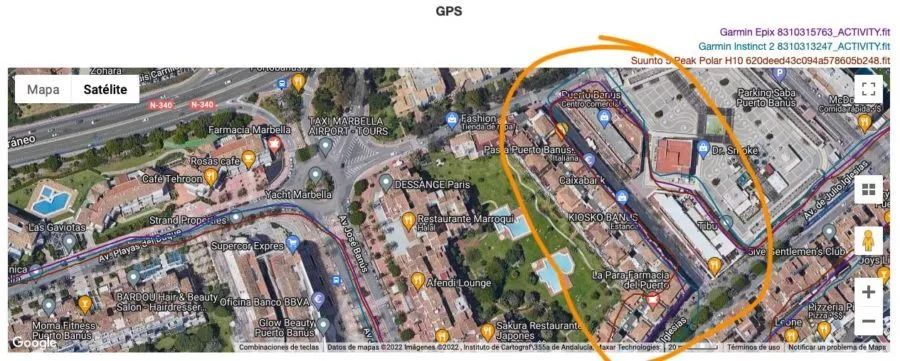
El resto del entrenamiento ya es a cielo abierto y no hay muchas más cosas que ver. Ten en cuenta que estoy buscando específicamente lugares y situaciones complicadas, así que es normal que todos se comporten de forma mejorable. Lo que busco es el comportamiento menos malo de entre todos los integrantes de la comparativa.
Vamos a dejar el asfalto a un lado y entremos en la montaña. En este entrenamiento busco específicamente zonas algo más difíciles (dentro de que no tengo ningún cañón complicado al alcance); con zonas de bosque, giros constantes y teniendo en cuenta además que el cielo estaba muy cubierto y con lluvia, lo cual dificulta la recepción. Una buena prueba para la configuración multibanda del Epix.
En este punto he utilizado dos caminos diferentes, uno para la subida y otro para la bajada (marcado con correspondientes flechas).
Si pinchas en la imagen y la amplías puedes ver que el track del Epix (en color morado) es perfecto en todo ese camino de subida. Se ajusta en todo momento al trazado de subida. Mientras tanto el Instinct 2 Solar y el FR745 hacen un track con algo más de dudas, especialmente el FR745 que se sale de lo que es el propio camino seguido.
En la zona de bajada voy por un pequeño sendero totalmente «fuera de pista» con muchos más árboles. La situación se repite, el track del Epix es más limpio que el del Instinct 2 o el FR745, que se mueven a ambos lados del track.
Nuevamente se repite un track algo erróneo por parte del FR745. El Instinct 2, sin llegar a ser tan bueno como el Epix, se ajusta mejor a los giros realizados.
El comportamiento que puedes ver en ese punto concreto se repite durante el resto de la actividad, por ejemplo en este otro punto donde también tomo diferentes caminos para la subida o la bajada.
Y si seguimos más adelante la situación continúa repitiéndose, aunque en este caso el que sale un poco peor parado es el Instinct 2, que tiene algunos puntos fuera del trazado correcto.
Pero el track del Epix continúa siendo superior gracias a la configuración multibanda.
¿Cuál es el rendimiento del Instinct 2? Bastante bueno en general. En las zonas complicadas no llega al nivel de precisión que se puede alcanzar con el Epix zafiro o Fenix 7 zafiro en configuración multibanda, pero hay que decir que esos tampoco van a tener un GPS perfecto.
No se pueden apreciar fallos importantes de recepción y no hay situaciones en las que vayamos a ver alterados los registros de ritmos o distancias. Así que en cuanto a GPS todo es correcto.
Pero una de las cosas en las que el Instinct original no era nada fino era en los registros de altimetría a través de su barómetro, como así reflejé en la prueba que le hice en su momento. Así que veamos eso en la próxima sección.
Fiabilidad del altímetro barométrico del Instinct 2
Como decía en el párrafo anterior, el altímetro barométrico del Garmin Instinct original tenía un comportamiento bastante irregular, algo que parece que Garmin no pudo dar solución a través de actualizaciones de firmware.
En el Instinct 2 Garmin ha cambiado la ubicación del puerto del barómetro, que ahora se sitúa a la derecha del reloj entre los dos botones.
En general, en los entrenamientos de carrera o ciclismo que he hecho no he encontrado objeciones en los datos de metros positivos mostrados. Prueba de ello está en esta salida de montaña en la que llevaba otros dos relojes con altímetro barométrico (el Epix y el FR745).
No he realizado la calibración en ninguno de ellos, dejando que sean ellos los que hagan la calibración que estimen oportuna.
Y los datos finales.
En términos absolutos los datos obtenidos son buenos. Siempre puede haber variaciones, especialmente en días con variaciones bruscas en el clima (porque los datos vienen de un barómetro, así funciona el altímetro barométrico), pero considero que es suficientemente fiable y que el problema del Instinct original está resuelto.
Rendimiento sensor de pulso óptico
Como en todos los modelos recientes de Garmin, el Instinct 2 utiliza el último sensor óptico de la firma: el Elevate v4 que se estrenó con los Venu 2 el año pasado. Pero a diferencia de los Fenix 7 y Epix, el sensor vuelve a estar cubierto por plástico en lugar de cristal.
Debes tener en cuenta que un pulsómetro de muñeca no funciona de la misma forma en todos los cuerpos. Todos somos distintos, y si además en la ecuación metemos cosas como tono de la piel, tatuajes, vello corporal… la diferencia de persona a persona puede ser bastante grande.
En mis pruebas no es que el espectro de usuarios sea muy amplio: estamos yo y yo mismo. Así que lo que a mi me funciona bien puede que a otro no lo haga, o que sea mejor.
Pero lo más importante a tener en cuenta es que hay que seguir unas pautas para llevar el sensor. Debe estar apretado (pero no que te corte la circulación), suficiente como para que el reloj no se mueva libremente en la muñeca. Dejando una separación de aproximadamente un dedo con respecto al hueso de la muñeca. Cumpliendo estos detalles te asegurarás que vas a conseguir los mejores resultados que tus condiciones pueden ofrecer.
Como siempre me gusta empezar por algo fácil, un entrenamiento a ritmo constante y no demasiado fuerte. Esto sienta las bases, porque si aquí no se comporta bien los indicios ya serían malos.
Hay algunos picos por parte del Polar H10 entre los minutos 7 y 10, pero se corrigen rápidamente y todo continúa dentro de la normalidad. No hay mucho más que comentar en estas gráficas y el registro tanto del Epix como del Instinct 2 se corresponden con los datos obtenidos del sensor en el pecho.
Las mediciones en entrenamiento a ritmos constantes no es algo que me preocupe demasiado, así que veamos un entrenamiento de intervalos.
Muchas veces miramos los datos de los sensores ópticos con desprecio confiando ciegamente en los sensores de pulso en el pecho… pues aquí tenemos un ejemplo donde ha sido el sensor de pecho el que ha fallado en dos puntos del entrenamiento. Porque efectivamente, también fallan.

En cualquier caso, los sensores de Instinct 2 o Epix coinciden plenamente en todo momento. Si te fijas en la zona de los intervalos el comportamiento es el habitual de los sensores ópticos.
El sensor en el pecho tiene un tiempo de reacción prácticamente instantáneo y las subidas y bajadas de frecuencia cardíaca se registran cuando se producen. Los sensores ópticos tienen un poco más de retraso, debido a que responden a los datos proporcionados por un algoritmo.
Otro entreno de series. En este caso sólo aparecen dos relojes porque el Polar Verity Sense se quedó sin batería y el COROS APEX Pro decidió tener un error de software… Fantástico cuando llevo dos dispositivos para contrastar datos y ambos fallan.
Ampliando la zona de los intervalos vemos un comportamiento muy similar. Hay una pequeña discusión en el segundo, con el Instinct 2 teniendo un poco de duda tanto en la bajada como en la subida al tercero. Y sin embargo en el tercero reacciona a la subida más rápido que el Epix.
En el final del sexto intervalo también hay una discrepancia, siendo en ese caso el Epix el que no baja la frecuencia cardíaca hasta los niveles anteriores.
Si pasamos la bici, mientras no haya vibraciones que pasen del manillar a la muñeca no hay nada que temer.
De hecho se convierte en una opción interesante si queremos utilizar el reloj como sensor de pulso externo transmitiendo datos de frecuencia cardíaca a aplicaciones como Zwift o TrainerRoad. De esa manera te ahorras tener que andar acordándote de ponerte el sensor en el pecho.
Eso sí, para uso de ciclismo en exterior vas a necesitar un sensor de pulso externo de forma obligatoria, hasta ahora no hay ningún sensor óptico en la muñeca que aporte datos fiables a nuestras actividades de bici.
Pero no todo es bonito, también hay días en los que por el motivo que sea el reloj decide que no va a funcionar correctamente, como este entrenamiento en el que El Instinct 2 funciona perfectamente a la par del Polar H10 y Polar Verity Sense, pero el Epix se declara en huelga desde prácticamente el principio.

El resumen es que es lo esperado ya que es un sensor que he probado en otros modelos de Garmin y con el que siempre he obtenido buenos resultados. Como siempre hay problemas cuando estamos haciendo algún entrenamiento de ciclismo en exterior, pero para el resto de actividades no tendría ningún problema en utilizar el sensor de este reloj.
Comprar Garmin Instinct 2
Espero que este análisis completo te haya ayudado a decidir si es un dispositivo válido para ti o no. Todo el trabajo que realizo puedes consultarlo sin ningún tipo de coste, pero si quieres apoyar la web y con ello el trabajo que realizo, la mejor forma de hacerlo es comprar tu nuevo dispositivo a través de los enlaces que facilito a continuación.
Y si no lo compras hoy, ¡acuérdate de pasar por aquí cuando vayas a hacerlo! A través de estos enlaces no sólo conseguirás un precio muy competitivo y la mejor atención al cliente, sino que además yo recibiré un pequeño porcentaje sin que a ti te cueste ningún desembolso adicional. Eso es lo que permite que pueda seguir ofreciéndote pruebas como esta en la página.
Opinión Garmin Instinct 2
De todas las renovaciones de modelo que ha hecho Garmin en su historia sin duda alguna el Instinct 2 es el que más funciones ha recibido de golpe. La cantidad de prestaciones a nivel de software que llegan al nuevo modelo y que no estaban en el original es apabullante. Sí, ninguna es novedosa, pero prestacionalmente se queda casi a nivel de relojes como el Forerunner 745 o los Garmin Fenix 6 estándar.
Mi única objeción es el tamaño de la pantalla, me resulta pequeña y la separación del círculo no termina de solucionar la practicidad. Obviamente el motivo de esta pantalla pequeña es técnico (menos consumo de batería, más superficie para carga solar) y entiendo los motivos, pero creo que puede ser un motivo de rechazo para usuarios que sufran de vista cansada. Si es tu caso es algo que deberás tener en cuenta.
El precio me parece «correcto». Si comparamos PVP del modelo anterior con PVP del modelo nuevo, son sólo 50€ de diferencia por los que Garmin da a cambio muchas más prestaciones. Obviamente el precio actual del Instinct original no es el que marca su PVP, pero tengo que comparar peras con peras. El problema que puede surgir es cuando miramos lo que podemos comprar por un presupuesto similar, y sólo pensando en Garmin: Forerunner 745 o Fenix 6 Pro son sólo algunos ejemplos. Tienen la competencia en casa.
Pero es un modelo que va a satisfacer a un buen grupo de usuarios. En esta generación creo que la opción del modelo Solar tiene más sentido todavía porque hay buen rendimiento de la carga solar y porque además va asociado a tener Garmin Pay en el reloj, siendo esto último un buen truco por parte de Garmin para conseguir incrementar el gasto que se hace en la compra. Y si la estética te gusta es una buena opción para tener en tu muñeca.
¡Gracias por leer!






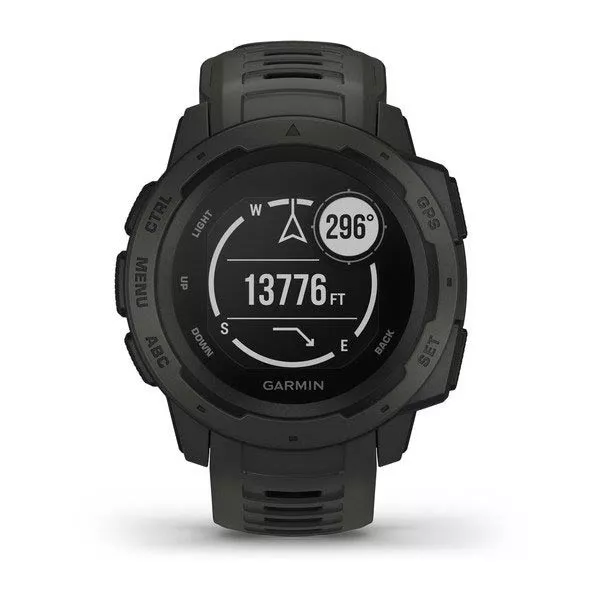
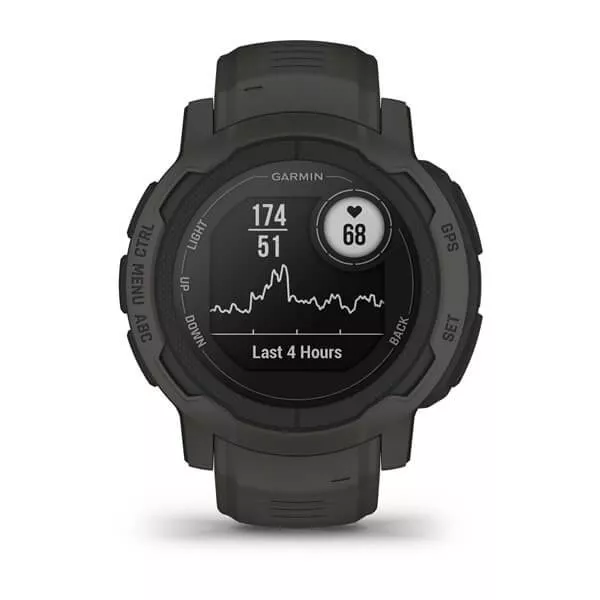
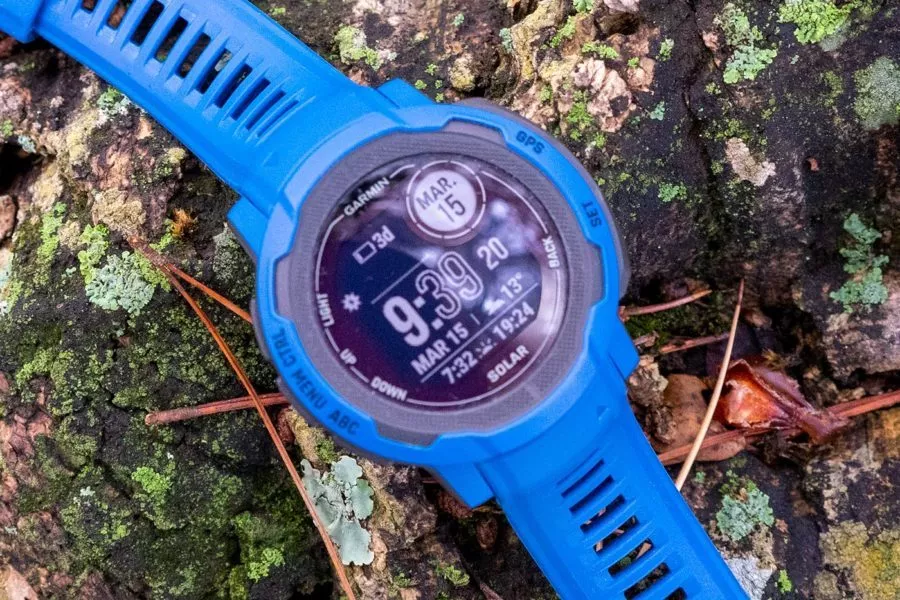
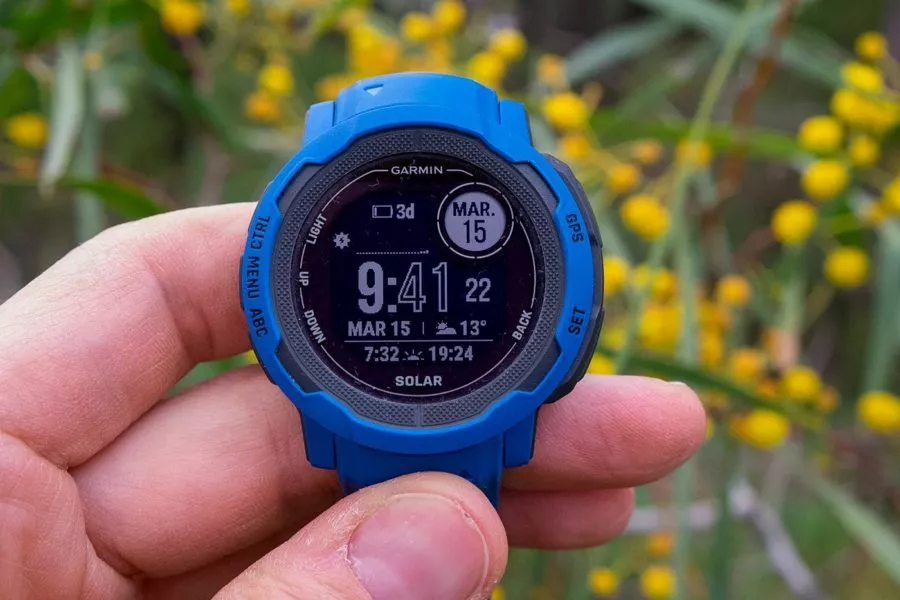
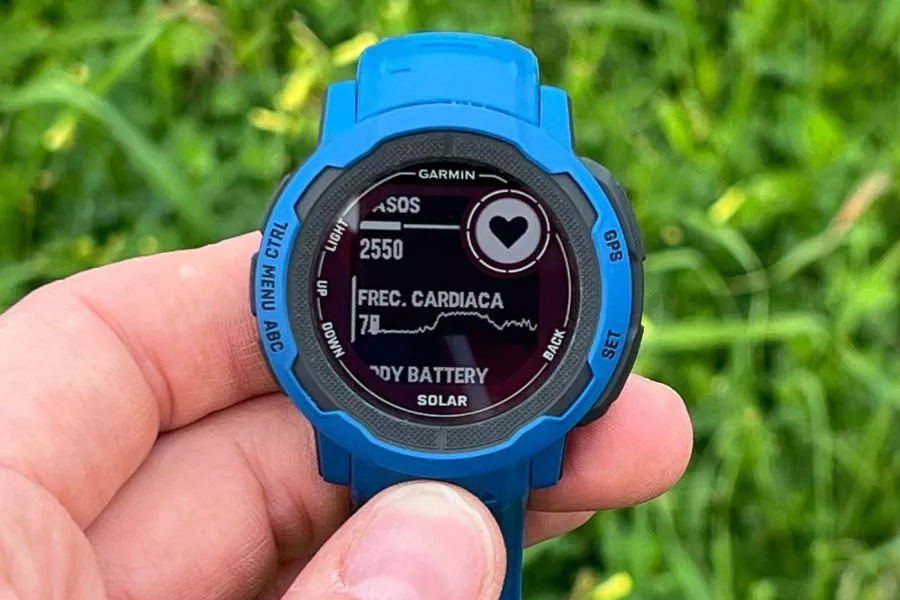
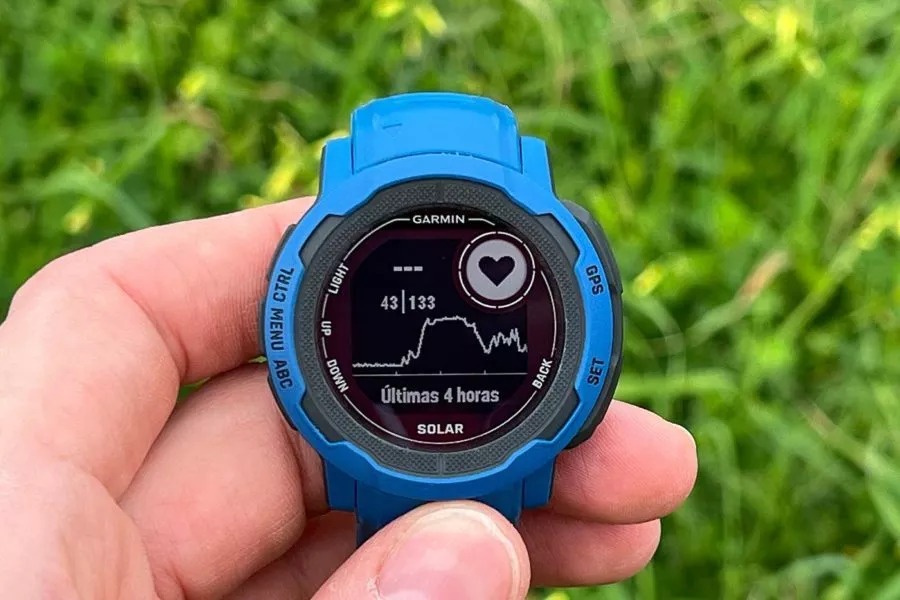
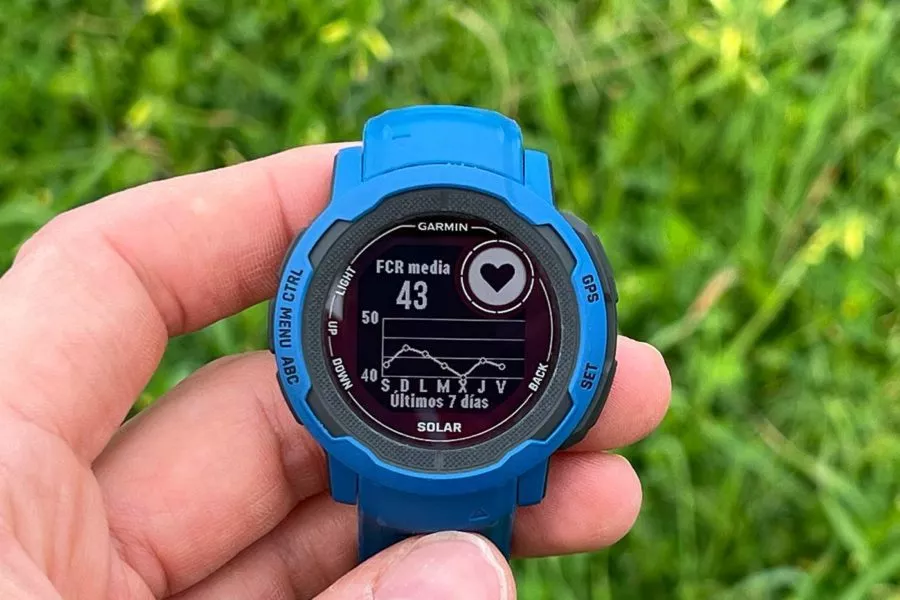
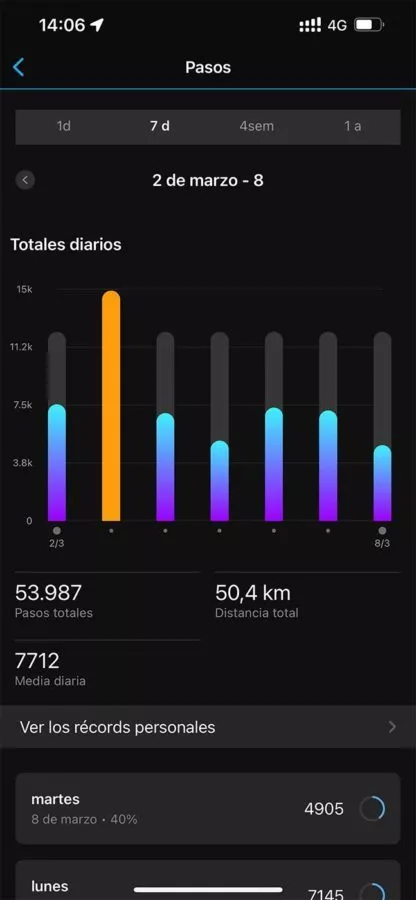
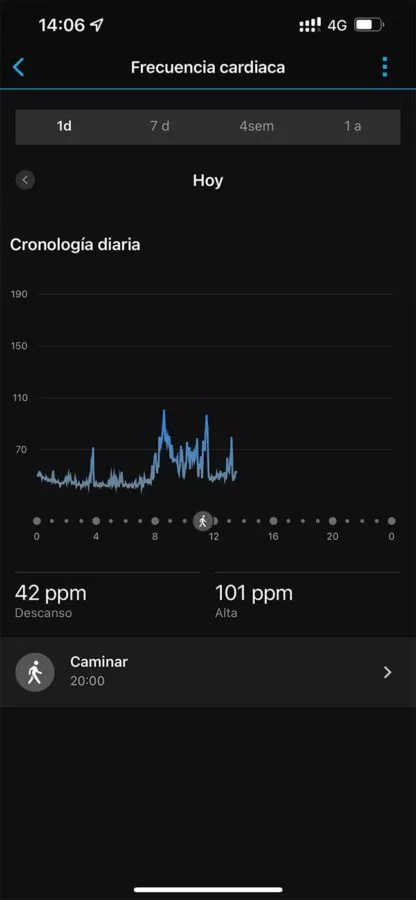
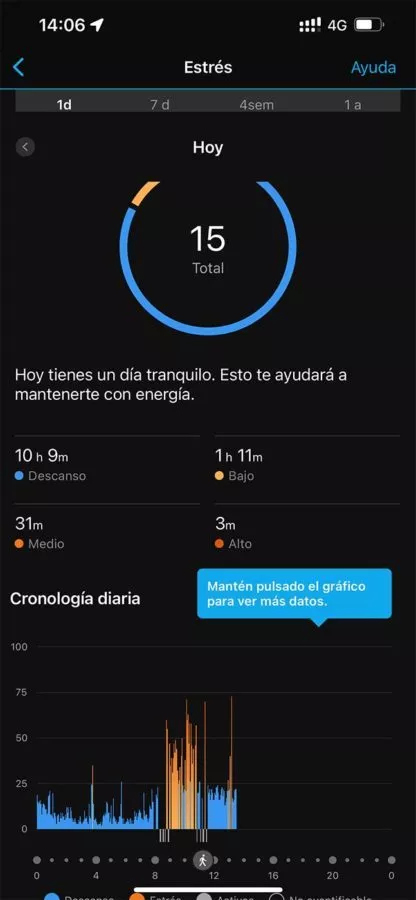
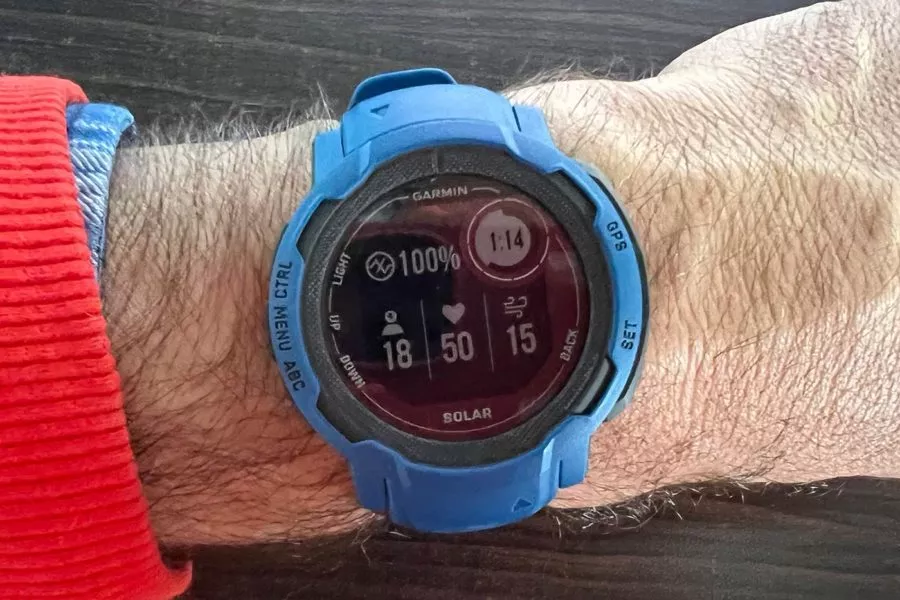
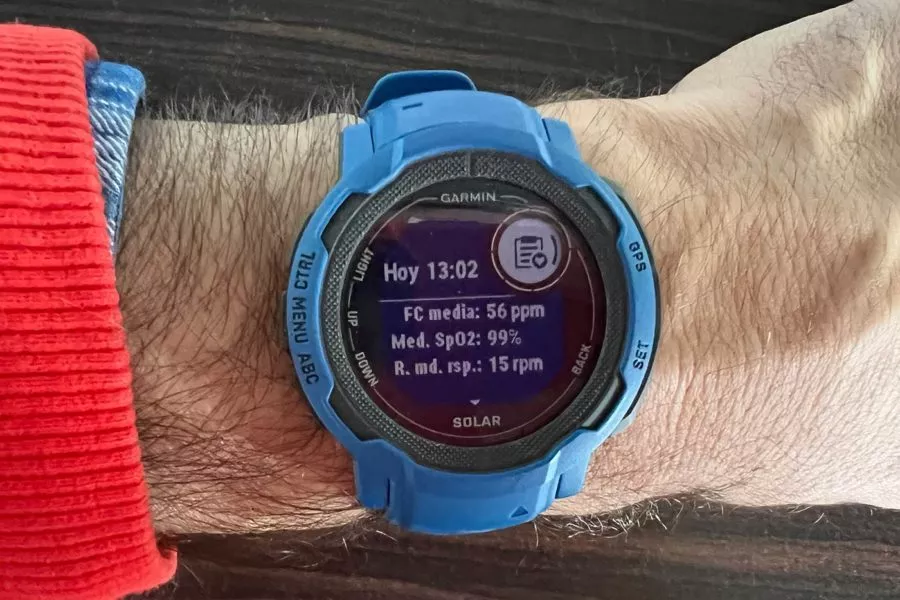
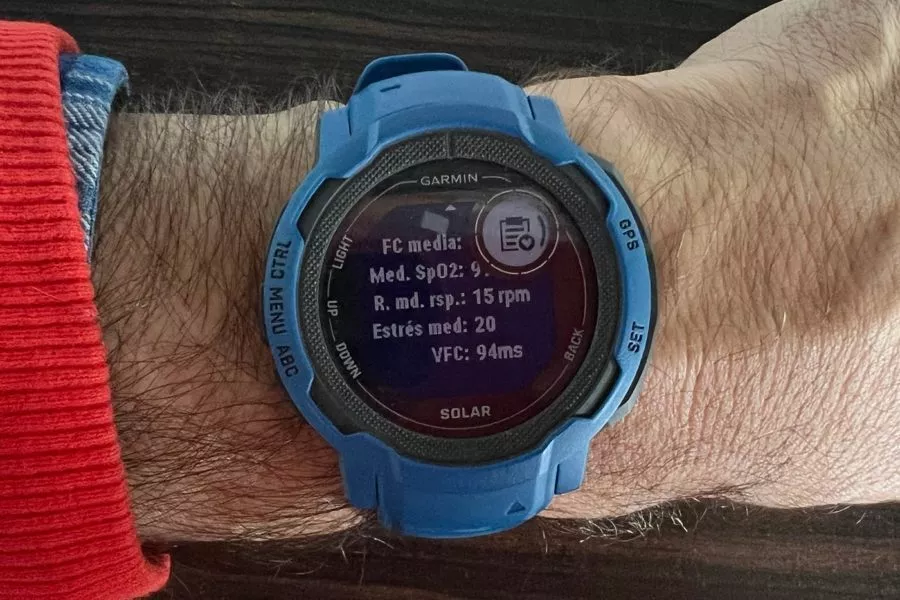
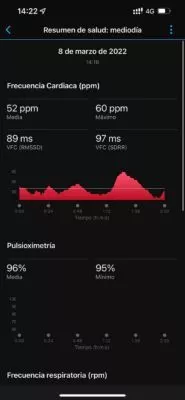
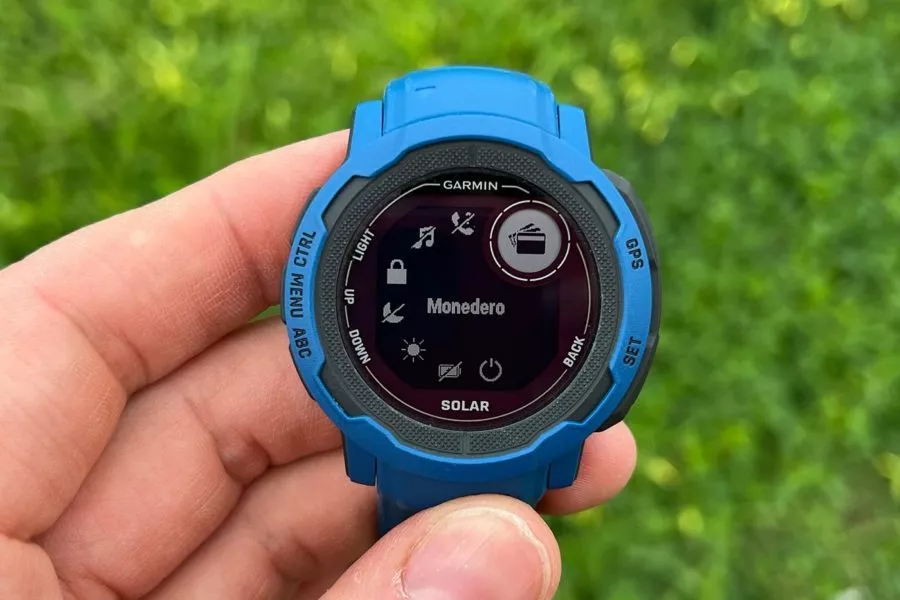
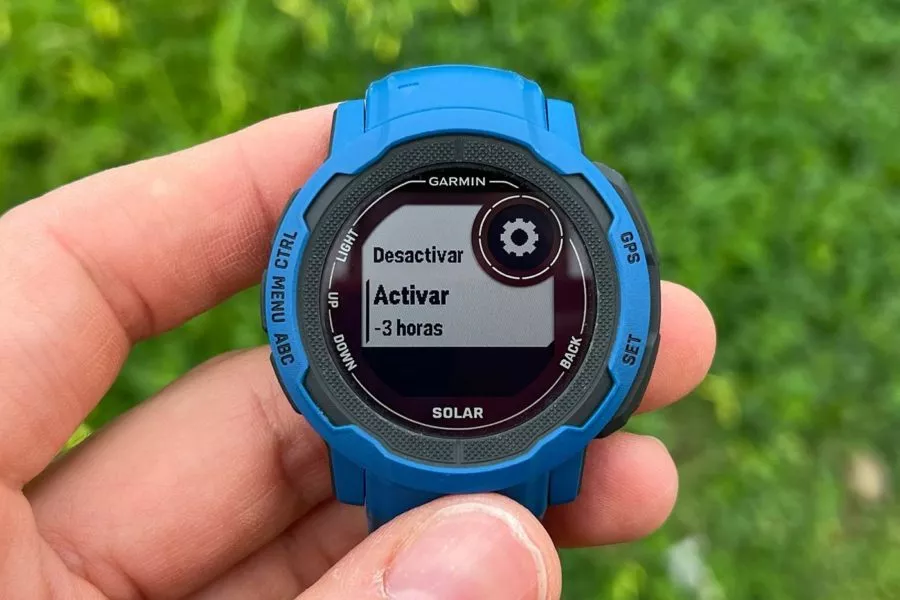
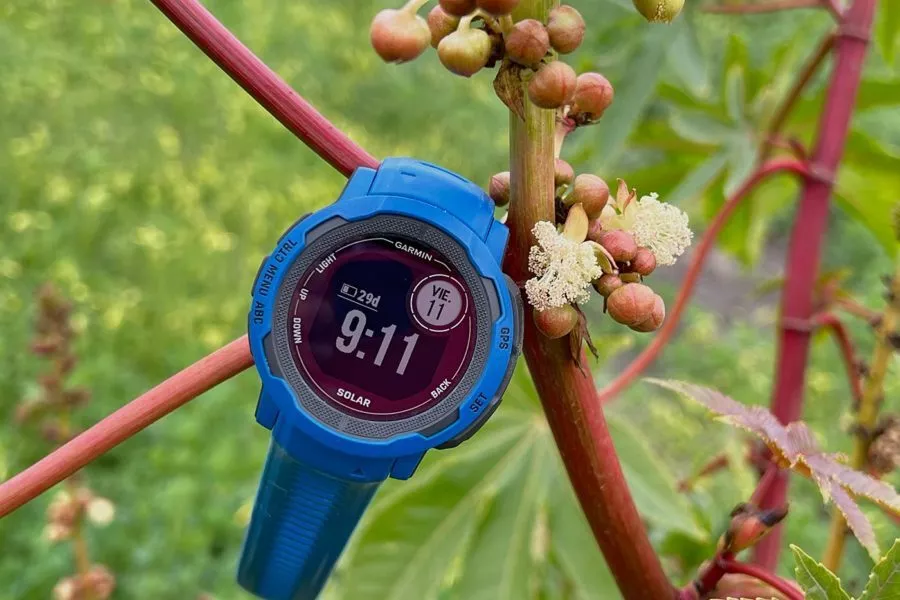

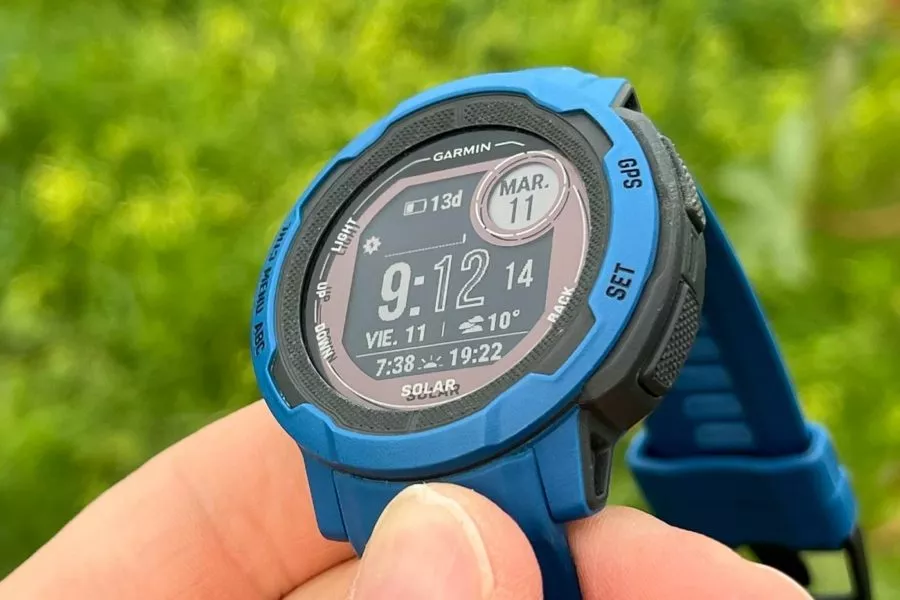
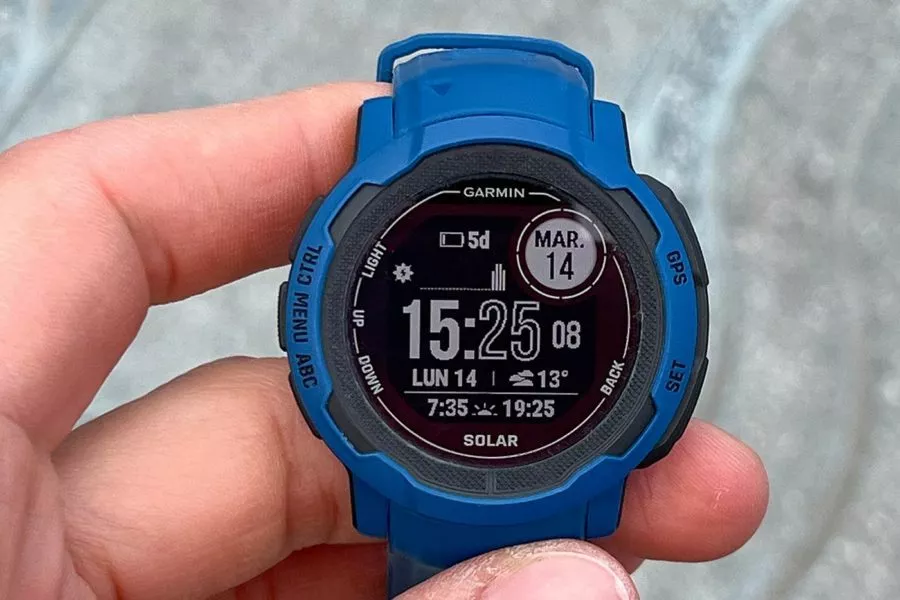
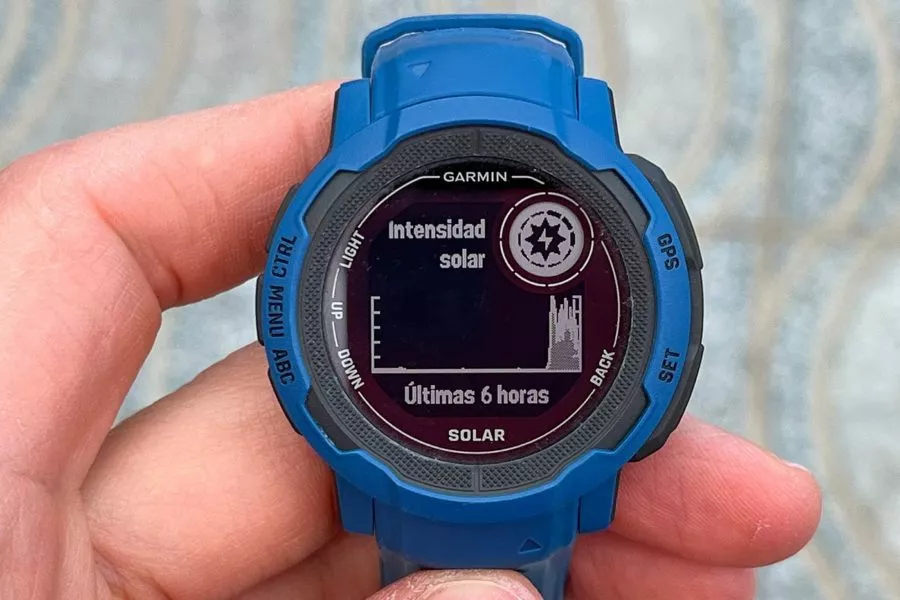
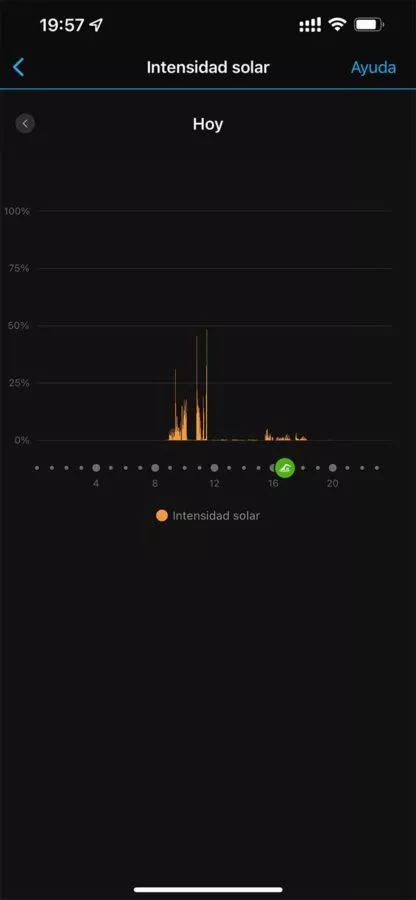

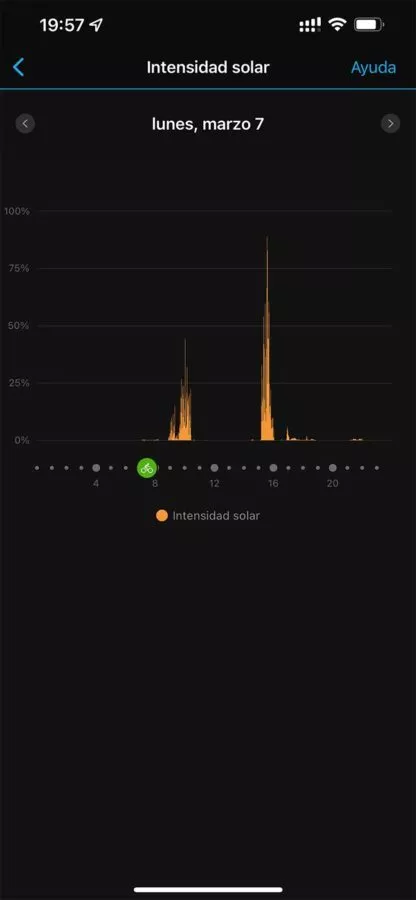
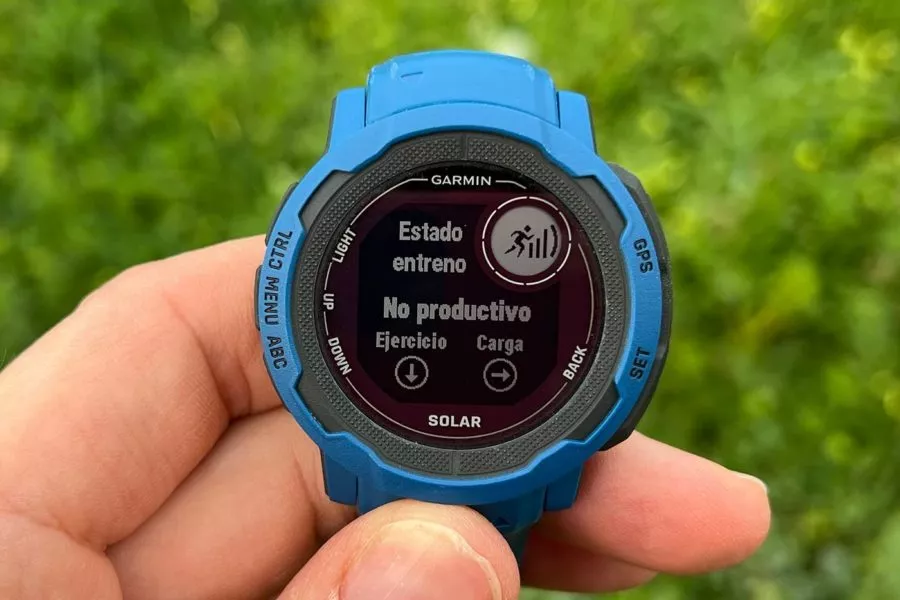
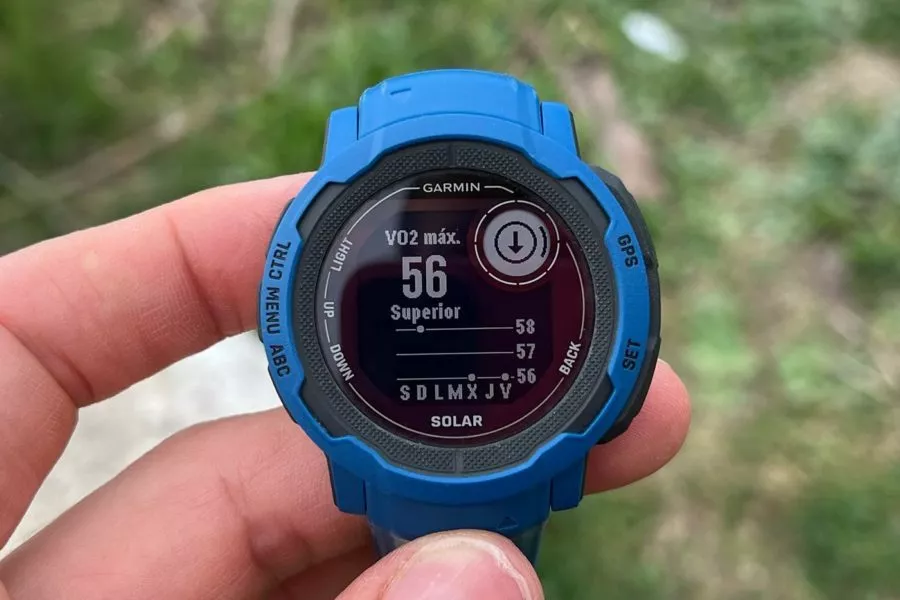
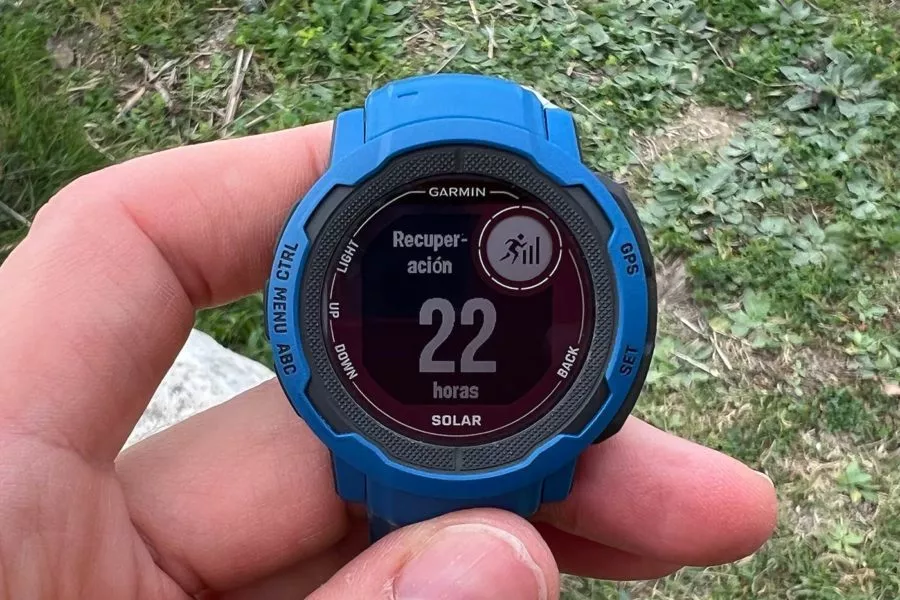
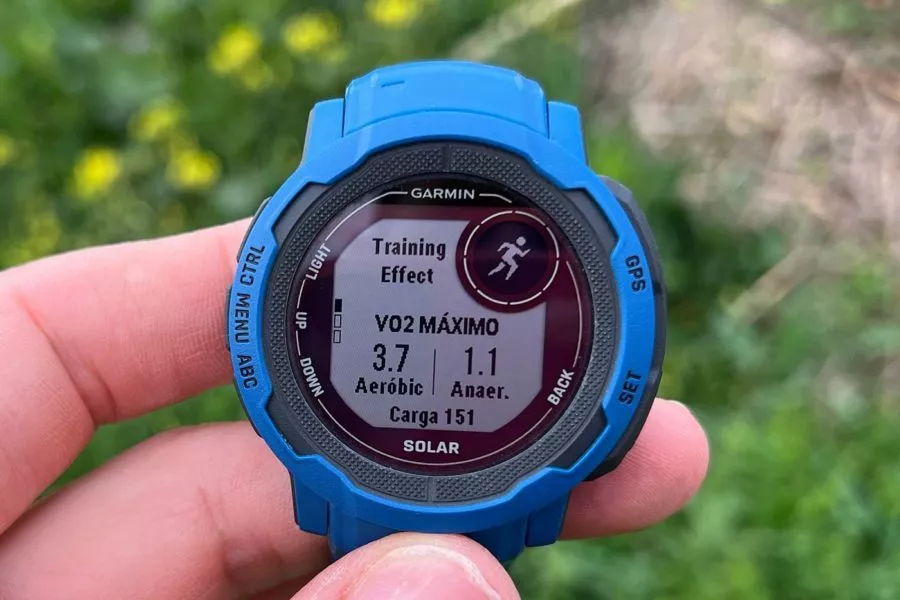
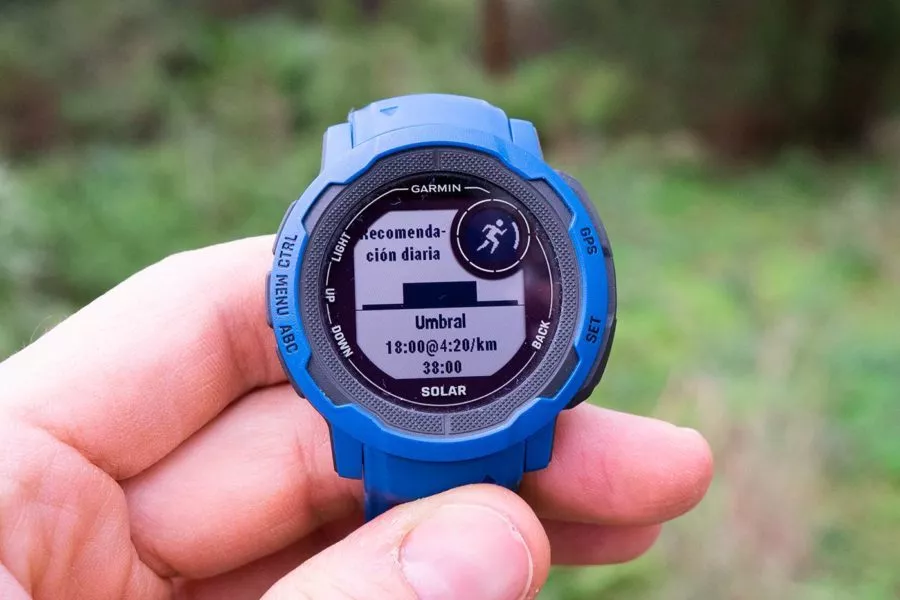
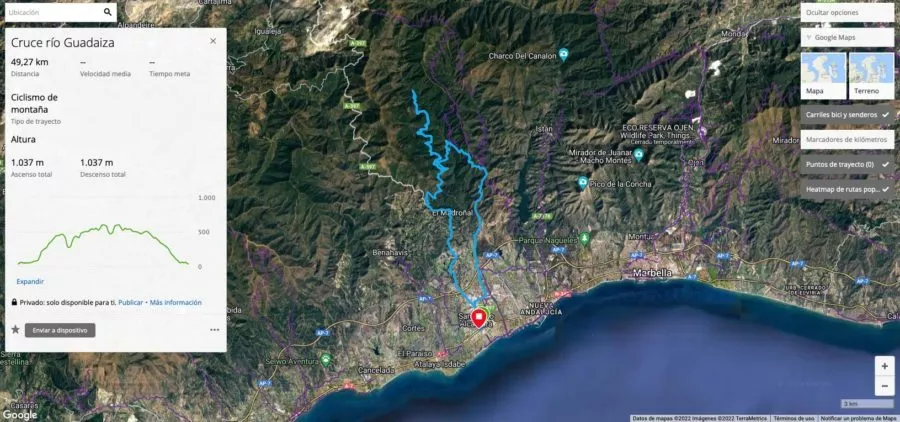
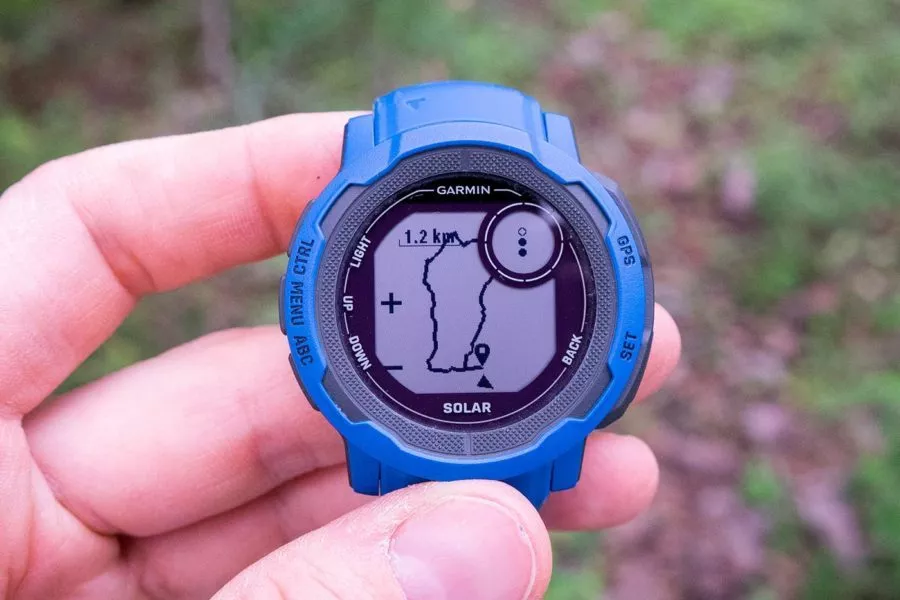
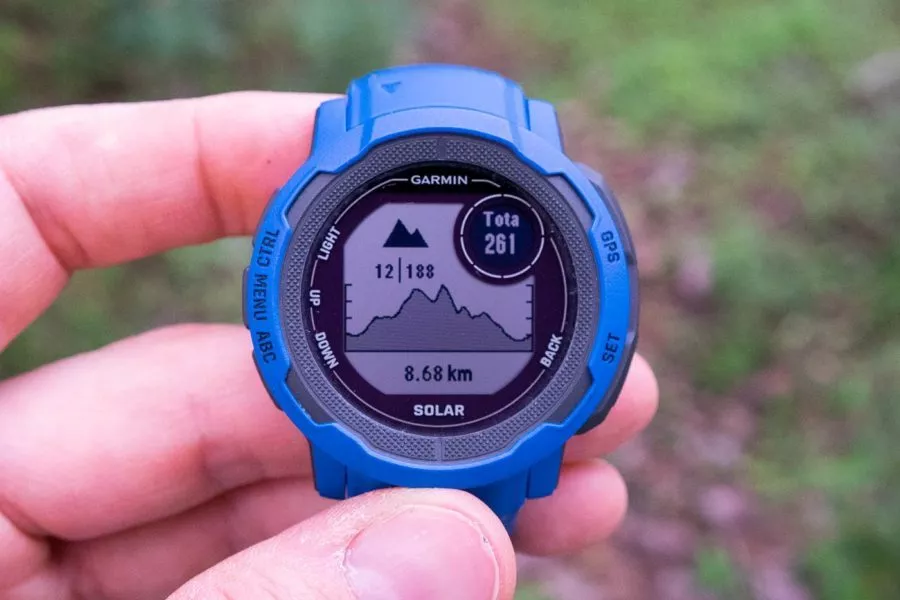
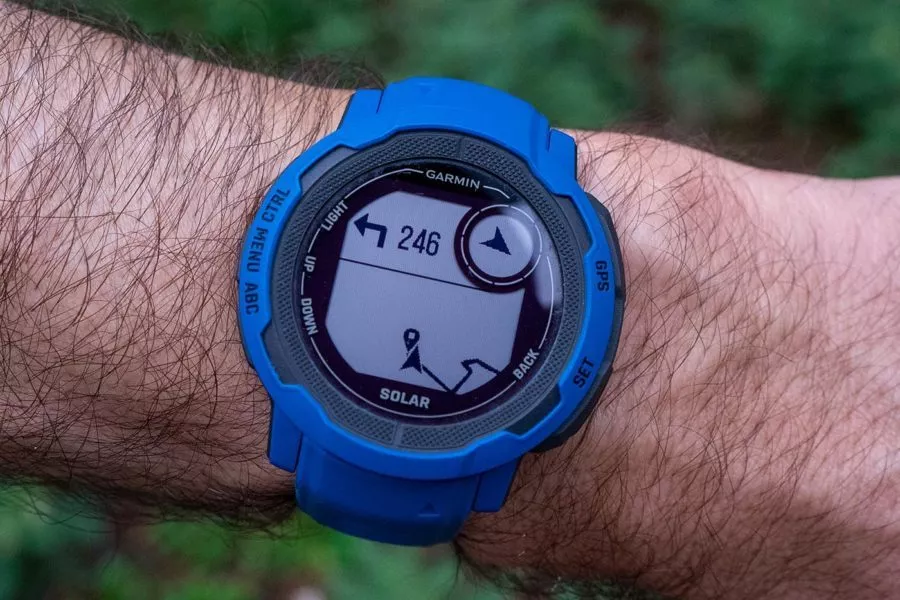
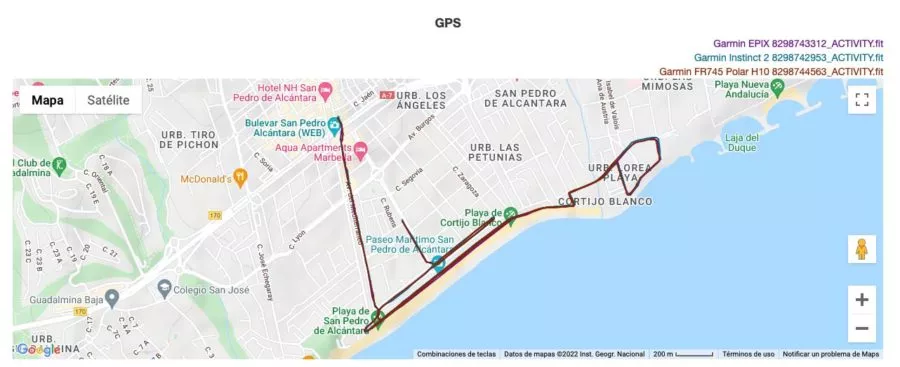
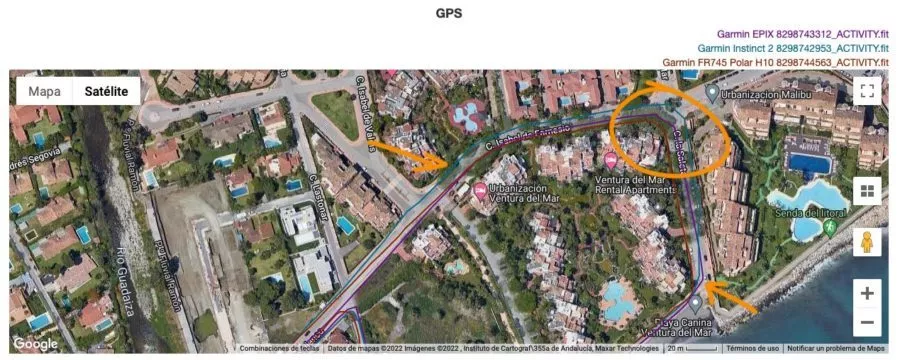
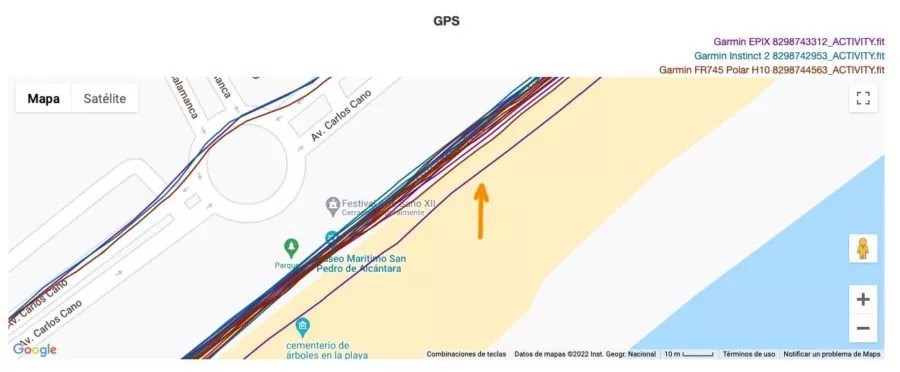
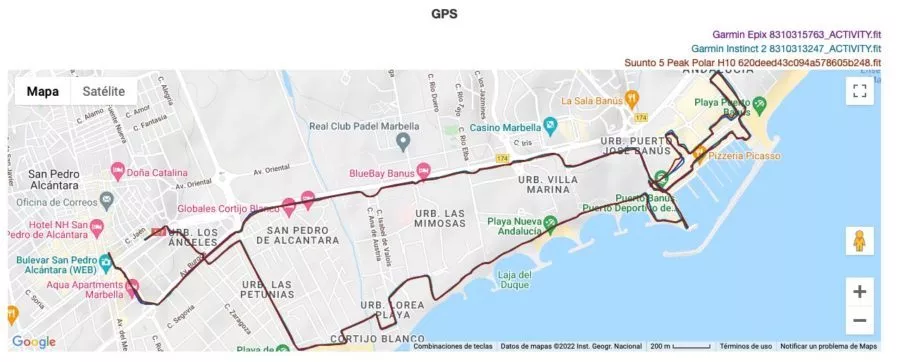

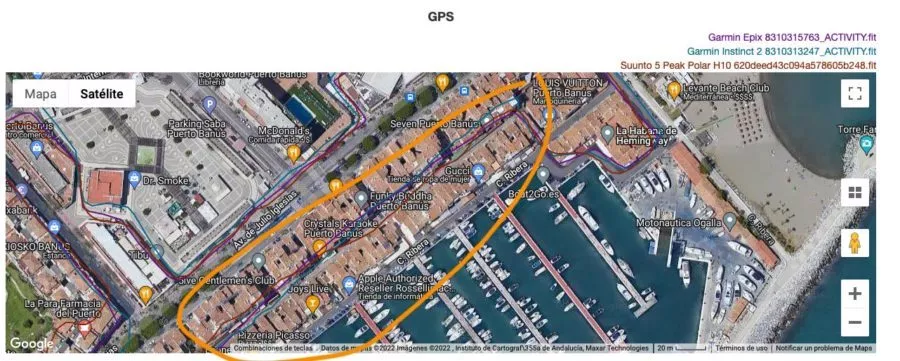
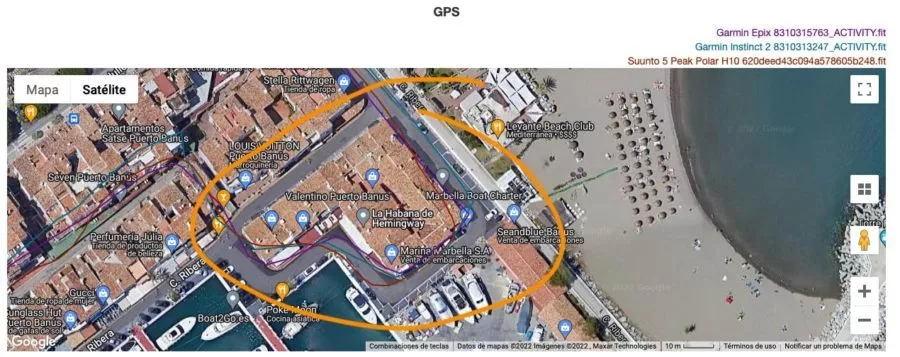

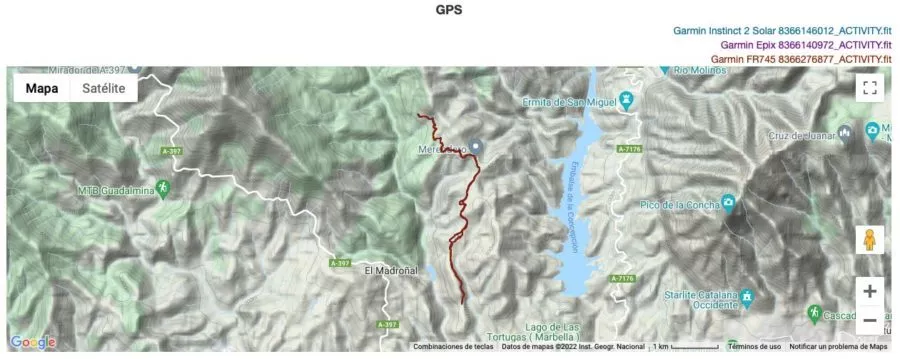
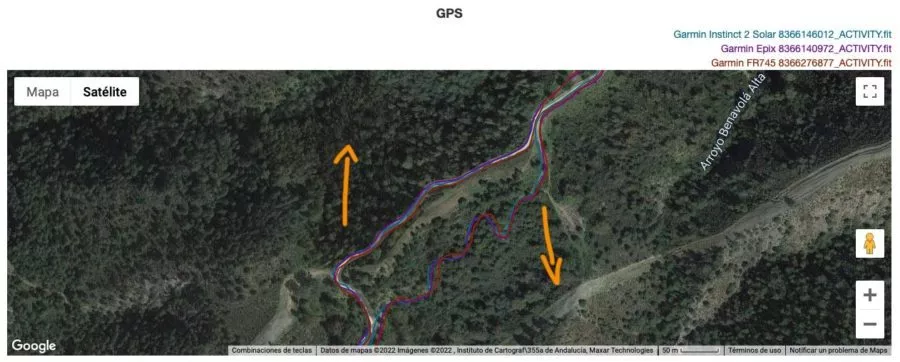
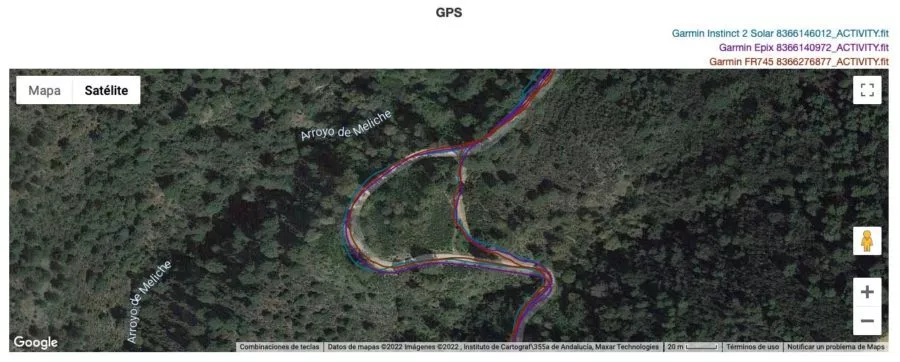
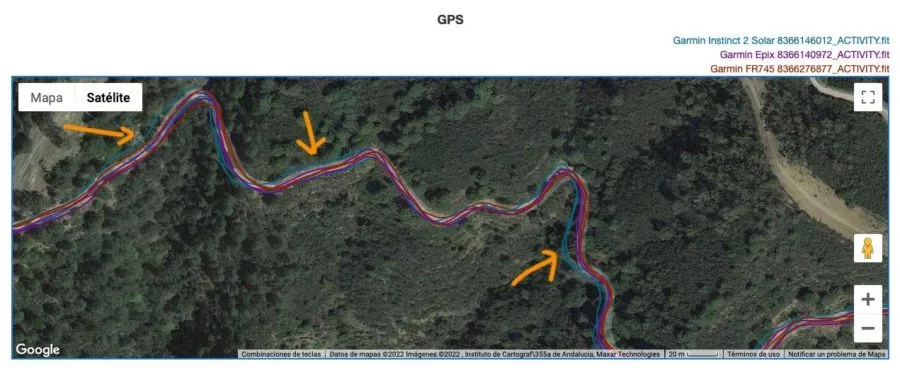
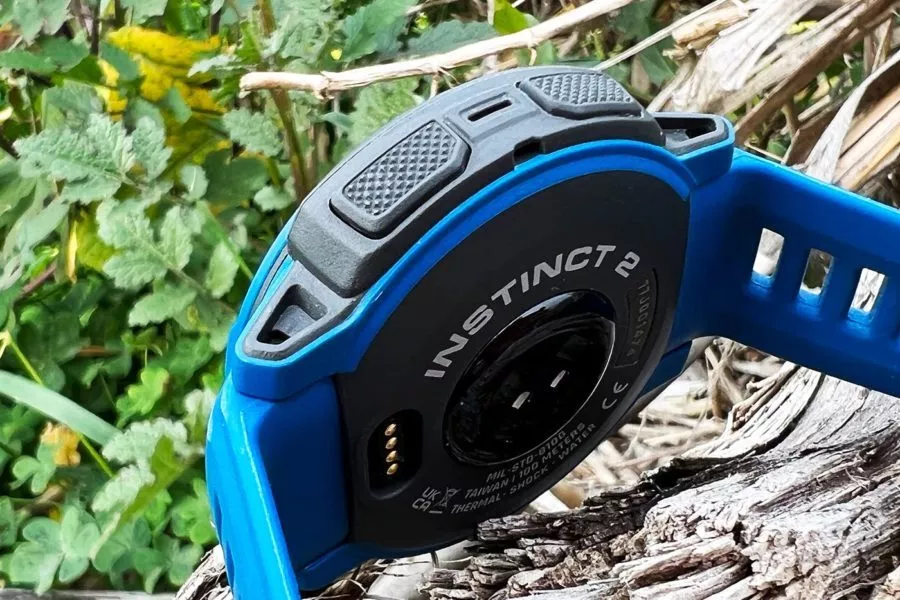
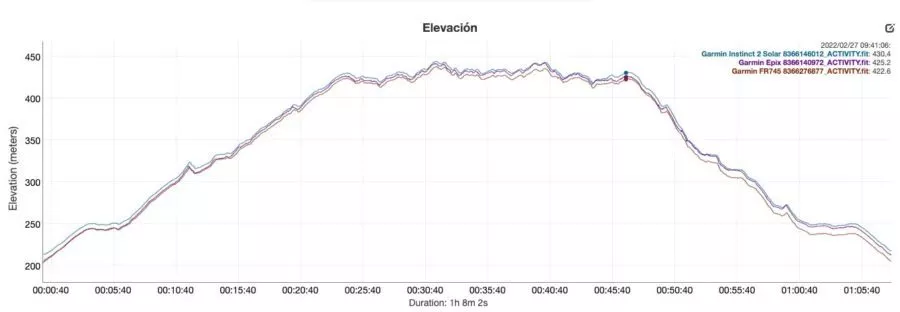










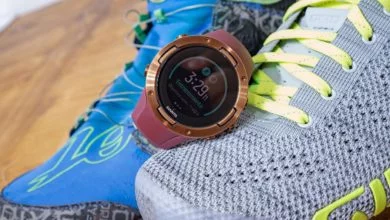

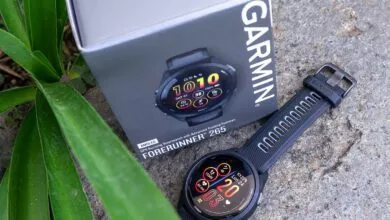
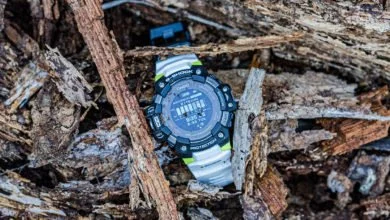
Interesante este modelo, sobre todo considerando el cambio del altímetro
Uso un Fenix 3 y estaba pensando pasarme al Fenix 6 (o 7 si encontrase oferta), pero con este reloj ahora me han entrado dudas…
Me sigue resultando difícil de entender como producto, ofrecer muchísimas funcionalidades pero una experiencia tan básica a nivel gráfico.
Ofrecer algo más sencillo acorde a esa pantalla y que sea más barato.
Mismas funcionalidades pero una mejor pantalla… Sin convertirse en gama alta.
Éso o pensarlo cono un dispositivo orientado al seguimiento pero cuyos datos realmente se ven en el movil…
He estado numerosas veces cerca de comprarlo. Pero esperaba esta review para confirmarlo… Y me quedo con más dudas. Ir a un 745 pero el sensor elevate me echa para atrás…. Esperar a un 755. No sé por donde tirar
El sensor del 745 tiene menos prestaciones en cuanto a HRV y demás, pero en fiabilidad y precisión se encuentra muy a la par con el v4
Hola. Gracias por tu aportación. Ya comentas que no trae mapas, entre cosas por su falta de utilidad por el tamaño de pantalla. ¿Pero hay forma de importar mapas (no rutas)? ¿Cómo y que tipo de mapas? Gracias. Un saludo
No, no es posible
Hola entre el Instinct 2 solar y el forerunner 255 cuál eliges? Estoy dudando. Gracias
Sin duda prefiero la pantalla más grande y de mayor calidad del 255